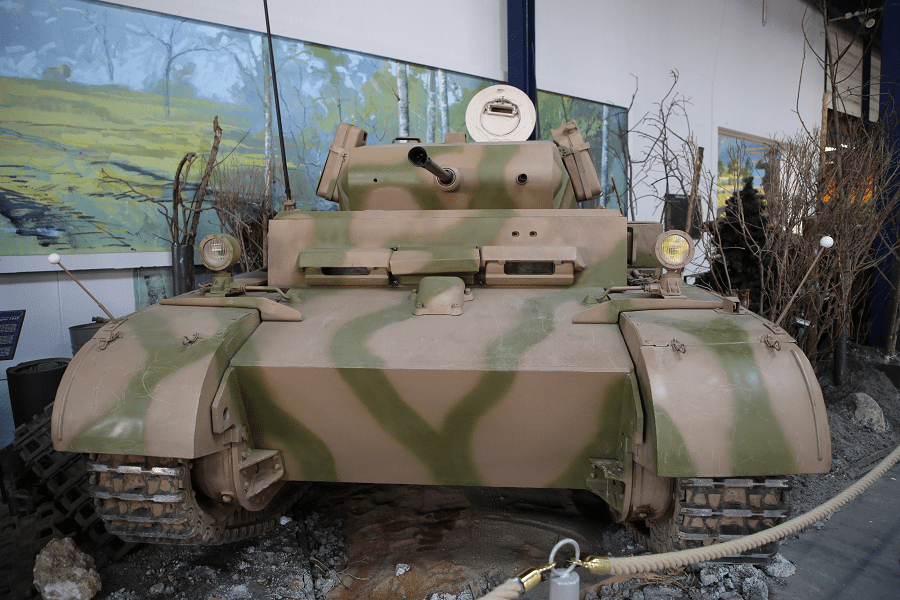The Panzer II is the common name used for a family of German tanks used in World War II. The official German designation was Panzerkampfwagen II (abbreviated PzKpfw II).
A light reconnaissance tank, the Ausf. L, was the only Panzer II design with the Schachtellaufwerk overlapping/interleaved road wheels and “slack track” configuration to enter series production, with 100 being built from September 1943 to January 1944 in addition to the conversion of the four Ausf. M tanks. Originally given the experimental designation VK 1303, it was adopted under the alternate name Panzerspähwagen II and given the popular name Luchs (“Lynx”).
Most tank versions of the Panzer II were armed with a 2 cm KwK 30 L/55 auto-cannon. Some later versions used the similar 2 cm KwK 38 L/55. This auto-cannon was based on the 2 cm FlaK 30 anti-aircraft gun, and was capable of firing at a rate of 600 rounds per minute (280 rounds per minute sustained) from 10-round magazines. A total of 180 shells were carried.
The Panzer II also had a 7.92 mm Maschinengewehr 34 machine gun mounted coaxially with the main gun.
The 2 cm autocannon proved to be ineffective against many Allied tanks, and experiments were conducted with a view to replacing it with a 37 mm cannon, but nothing came of this.
Prototypes were built with a 50 mm tank gun, but by then the Panzer II had outlived its usefulness as a tank regardless of armament. Greater success was had by replacing the standard 2 cm armour-piercing explosive ammunition with tungsten cored solid ammunition, but due to shortages of tungsten this ammunition was in chronically short supply.
Engine: Maybach HL62 TRM 6-cylinder petrol













